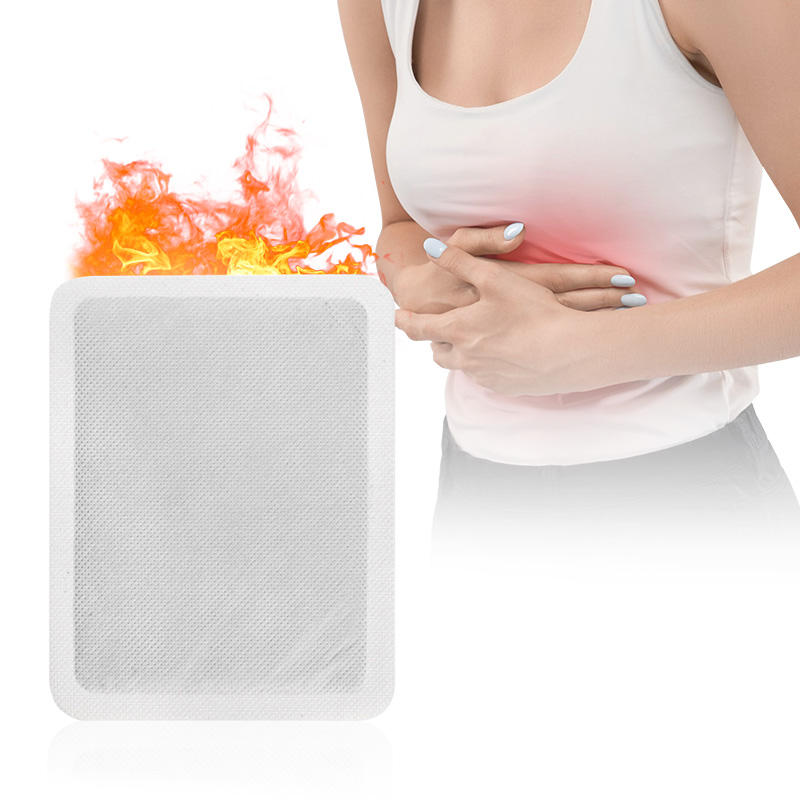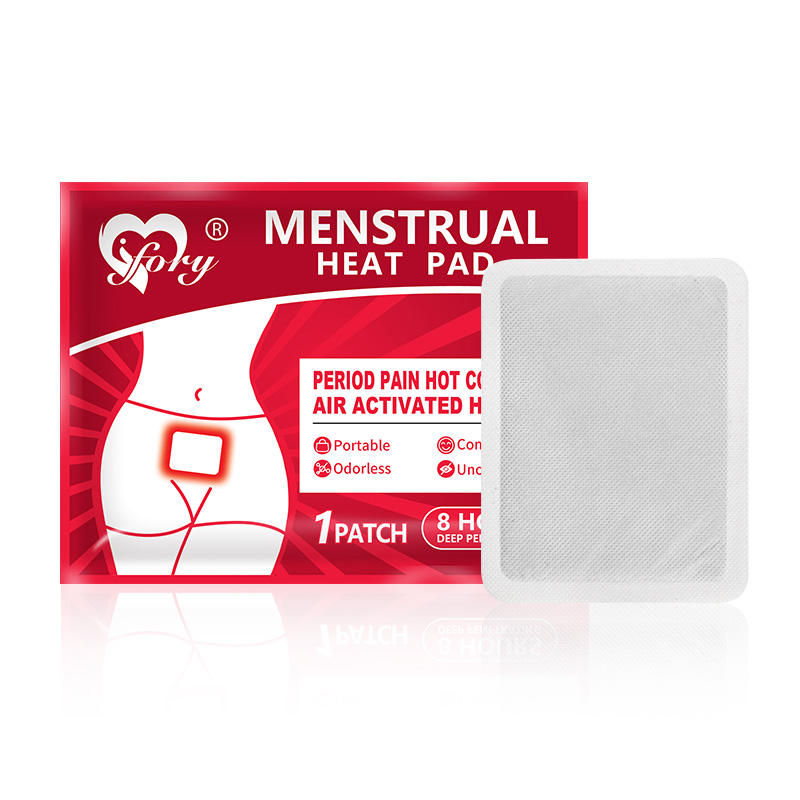Why Is Sustainability Important for Menstrual Heat Pads?
As consumers become increasingly aware of environmental impact, sustainability has emerged as a key consideration in the health and wellness industry, including menstrual products. Menstrual heat pads, used for relieving period discomfort, are no exception. For Menstrual Heat Pad Manufacturers, OEM suppliers, and brands offering Custom Menstrual Heat Pads and Private Label Menstrual Heat Pads, integrating sustainable practices can lead to greater brand credibility, customer loyalty, and a competitive edge in the market.
This article explores why sustainability is important in the menstrual heat pad industry, the benefits it brings, and how Menstrual Heat Pad Suppliers and manufacturers can implement eco-friendly practices to meet consumer demand.

1. Rising Consumer Demand for Sustainable Products
Sustainability has become a priority for many consumers, especially within the health and wellness space. Modern consumers are more informed about environmental issues and prefer products that reflect their values. A growing segment of consumers prioritize brands that demonstrate social responsibility by offering environmentally friendly options. This preference is particularly relevant for menstrual products, as single-use items can contribute significantly to waste.
Key Factors Driving Demand for Sustainable Menstrual Heat Pads:
- Environmental Awareness: Concerns over pollution, landfill waste, and resource depletion drive consumers to seek greener options.
- Health and Safety: Many consumers are also mindful of potential chemical exposure and prefer products made from natural, safe materials.
- Social Responsibility: Consumers value brands that contribute positively to the environment and society.
By meeting this demand, Menstrual Heat Pad Manufacturers and OEM suppliers not only contribute to a healthier planet but also build stronger relationships with eco-conscious customers.
2. Environmental Impact of Menstrual Heat Pads
Menstrual heat pads, especially disposable varieties, contribute to landfill waste if they are not biodegradable or made from recyclable materials. Some pads may contain synthetic components that take years to break down, thus adding to long-term waste and pollution. Additionally, non-renewable energy used during production adds to the carbon footprint, making the manufacturing process another key area for sustainable improvement.
Environmental Issues in the Menstrual Heat Pad Industry:
- Non-Biodegradable Materials: Plastic and synthetic fibers, common in conventional menstrual products, can take hundreds of years to decompose.
- Chemical Pollutants: Some heat pads may contain chemicals that can leach into soil and water sources.
- High Energy Consumption: Manufacturing processes that rely on non-renewable energy sources add to the carbon footprint of menstrual heat pads.
Switching to biodegradable and renewable resources reduces environmental harm and appeals to eco-conscious consumers looking for responsible alternatives.
3. Benefits of Sustainability for Menstrual Heat Pad Manufacturers
For Menstrual Heat Pad Manufacturers and brands, adopting sustainable practices provides both environmental benefits and business advantages. Sustainable products can differentiate a brand, particularly in a competitive market where consumers value eco-friendly practices.
Business Benefits of Sustainability:
- Enhanced Brand Reputation: Being eco-friendly boosts brand image and appeals to ethically driven customers.
- Cost Savings in the Long Term: Sustainable manufacturing, such as using renewable energy or recycled materials, can lower long-term operational costs.
- Regulatory Compliance and Risk Reduction: As regulations tighten around environmental impact, adopting sustainable practices can prevent potential fines and keep brands ahead of the curve.
For Menstrual Heat Pad Suppliers and OEM partners, aligning with these sustainable values can lead to strong partnerships with eco-conscious brands, strengthening market position.
4. Sustainable Materials and Production Methods
Sustainable materials and practices in production can greatly reduce the ecological footprint of menstrual heat pads. Custom Menstrual Heat Pad options and Private Label Menstrual Heat Pad offerings can include eco-friendly materials like organic cotton, biodegradable polymers, and renewable energy sources.
Popular Sustainable Materials:
- Biodegradable Fabrics: Materials such as organic cotton or bamboo are biodegradable and hypoallergenic, offering comfort and safety.
- Recycled Fillings: Heat-retaining fillings made from recycled materials, like natural minerals or bio-based compounds, can replace synthetic components.
- Renewable Energy in Production: Utilizing solar, wind, or other renewable energy sources in the manufacturing process can reduce overall emissions.
These sustainable materials appeal to consumers and can also lead to cost savings in energy and waste management for Menstrual Heat Pad Manufacturers.
5. The Role of Menstrual Heat Pad OEM Suppliers in Sustainability
Menstrual Heat Pad OEM suppliers play a vital role in driving sustainability by offering eco-friendly options and innovative design features. Many brands rely on OEMs for product development, and sustainable practices at this level can set a standard for the rest of the industry.
OEM suppliers can also introduce advancements in eco-friendly packaging, such as recyclable or compostable packaging materials, helping brands reduce their environmental impact and achieve eco-certifications that appeal to consumers.
How OEM Suppliers Can Support Sustainable Menstrual Heat Pads:
- Eco-Friendly Packaging: Offering compostable, recyclable, or minimalistic packaging options to reduce waste.
- Recyclable Heat Components: Developing heat components made from recyclable or renewable materials, contributing to the product’s circular lifecycle.
- Sustainable Sourcing: Ensuring raw materials are sourced responsibly, minimizing negative environmental impact.
By partnering with Menstrual Heat Pad OEMs that prioritize sustainable practices, brands can reduce their carbon footprint and offer consumers environmentally conscious products.
6. Sustainability in Custom and Private Label Menstrual Heat Pads
Offering Custom Menstrual Heat Pads and Private Label Menstrual Heat Pads with sustainable options allows brands to tailor their products according to customer preferences while reducing environmental impact. Customization can include eco-friendly materials, packaging, and designs that resonate with specific demographics, such as Gen Z and Millennials, who tend to prioritize sustainability.
Sustainable Customization Options:
- Natural Fibers and Biodegradable Linings: These can reduce landfill waste and appeal to customers with eco-friendly preferences.
- Reusable Options: Reusable menstrual heat pads with washable covers or rechargeable heating elements minimize single-use waste.
- Reduced Packaging Waste: Minimizing or eliminating excess packaging aligns with the values of consumers aiming to reduce plastic use.
Menstrual Heat Pad Suppliers that can provide customized sustainable products give brands an edge, allowing them to meet niche demands and build brand loyalty among eco-conscious customers.
7. Future of Sustainability in the Menstrual Heat Pad Industry
Sustainability is not just a trend—it’s becoming essential for any brand looking to thrive in the future. As more companies adopt sustainable practices, the menstrual heat pad industry is expected to shift toward eco-friendly solutions as a norm. Innovations like biodegradable heating elements, plant-based adhesives, and energy-efficient production methods are expected to drive growth and meet evolving regulatory standards.
Key Areas for Growth:
- Biodegradable and Compostable Pads: Products that fully decompose in nature represent the next frontier in sustainable menstrual care.
- Smart Technology for Reusable Products: Introducing heat pads with rechargeable, low-energy heating mechanisms promotes sustainability by reducing waste.
- Circular Economy Practices: By collecting and recycling used pads, brands could close the loop on menstrual heat pads, offering an even more sustainable solution.
Sustainability will not only enhance the environmental impact of the menstrual heat pad industry but also make brands more resilient to shifts in consumer behavior and regulatory landscapes.
Conclusion
Sustainability in the menstrual heat pad industry is crucial for addressing environmental concerns, meeting consumer demand, and ensuring long-term success for brands and manufacturers. For Menstrual Heat Pad Manufacturers, OEM Suppliers, and brands offering Custom and Private Label Menstrual Heat Pads, integrating sustainable practices is no longer optional but essential for competitiveness in the market.
By adopting eco-friendly materials, partnering with responsible OEM suppliers, and developing custom products that align with environmental values, brands can meet the needs of modern consumers and contribute positively to the planet.
Frequently Asked Questions
Q1: What materials can make menstrual heat pads more sustainable?
A1: Using biodegradable fabrics, organic cotton, and recycled materials can significantly reduce the environmental impact of menstrual heat pads.
Q2: How can OEM suppliers support brands in sustainability?
A2: Menstrual Heat Pad OEM suppliers can provide eco-friendly options for materials, packaging, and energy-efficient production methods to help brands reduce their carbon footprint.
Q3: Are there reusable options for menstrual heat pads?
A3: Yes, some menstrual heat pads are designed to be reusable with washable covers or rechargeable heating components, reducing single-use waste.
Q4: How does private labeling contribute to sustainability?
A4: Private labeling allows brands to introduce sustainable features tailored to specific customer demands, such as biodegradable materials or eco-friendly packaging.
Q5: What are the future trends in sustainable menstrual heat pads?
A5: Future trends include biodegradable and compostable products, reusable options with rechargeable heat, and circular economy practices to close the loop on product lifecycle.
By focusing on sustainability, menstrual heat pad brands and manufacturers can create products that not only meet consumer needs but also help protect the environment for future generations.






